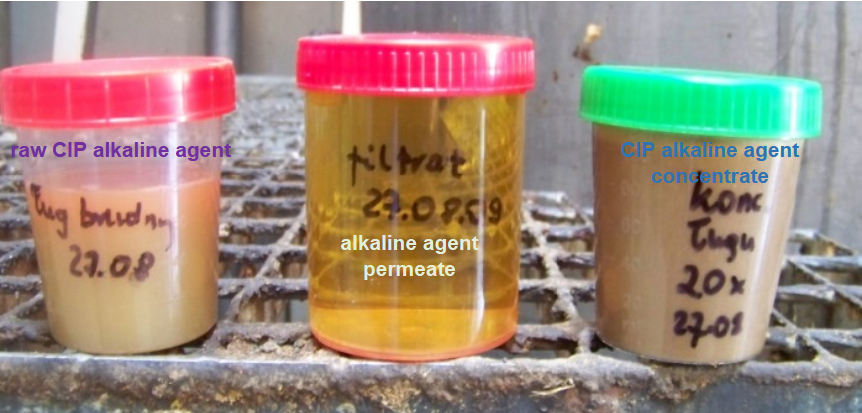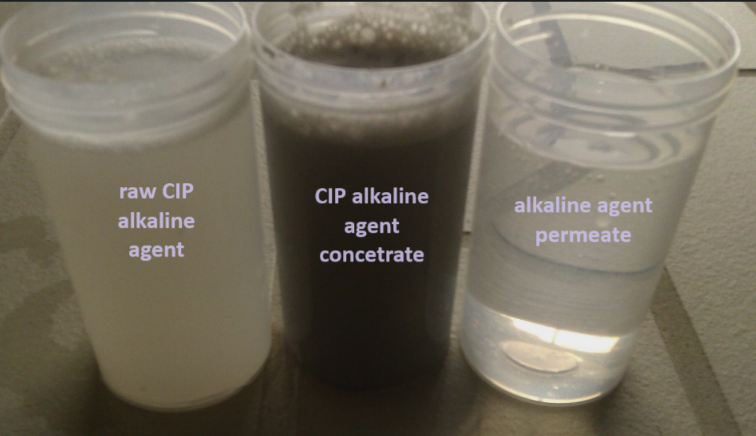 CIP recovery
CIP recovery
Sooner or later, every user of CIP unit has to ask himself the question WHEN the cleaning solution should be considered unsuitable for further usege and should be replaced.
The answer for mentioned question should be considered in the context of two factors at the same time:
1. Loss of cleaning ability defined as:
1.1. For alkaline solutions
1.1.1. Loss of alkalinity
1.1.2. Loss of complexing power (helation of water hardness)
1.1.3. Loss of wettability (determined by surface-active substances called surfactants)
1.2. For acidic solutions – loss of acidity
2. Covering the cleaning solution with an organic substance, leading to contamination of the solution.
T o exclude the loss of the solution's cleaning ability, the simplest way is to titrate it to determine the alkalinity/total acidity, bearing in mind that the loss of other values (sequestration and wettability) closely follows the loss of the main parameter. Hence, it is necessary to replenish the alkalinity/acidity at least once a week
NOTE: A decrease of activity of the cleaning solution does not equal a conductivity decrease . To make matters worse, in the case of alkaline solutions, this relationship is quite the opposite due to the combination of CO2 from atmospheric air. The formed sodium carbonate causes an increase in conductivity while alkalinity decreases.
To remove the organic coating of the cleaning solution, UF or NF membrane techniques can be successfully used.
Let's see how it looks like in fish processing industry with concentration factor CF=20:

and a similar photo from the dairy industry producing cottage cheese:

However, the selection of the appropriate technique depends on the parameters of the washing solution and the type of substances we would like to remove from the contaminated washing solution. Please follow these guidelines:
-
PERMEATION
UF ceramic
NF polymer
CLARIFICATION PARAMETERS
PROTEINES
ABSENCE
ABSENCE
Peptides
PARTLY
ABSENCE
FATS
ABSENCE
ABSENCE
CARBOHYDRATES
LOW
ABSENCE
PERMEATION OF CLEANING SOLUTION INGREDIENTS
Alkalinity iones
FULL
FULL
Acidic iones
FULL
FULL
Complexing agents such EDTA
FULL
PARTLY
Phosphonate-type hardness stabilizers
FULL
LOW
Surfactants
FULL
PARTLY
Solvents such butyldiglycol
FULL
not allowed
POSSIBILITY OF WORKING WITH AN OXIDANT AT THE SAME TIME, e.g. NaOCl
Chlorine resistance
FULL
not allowed


